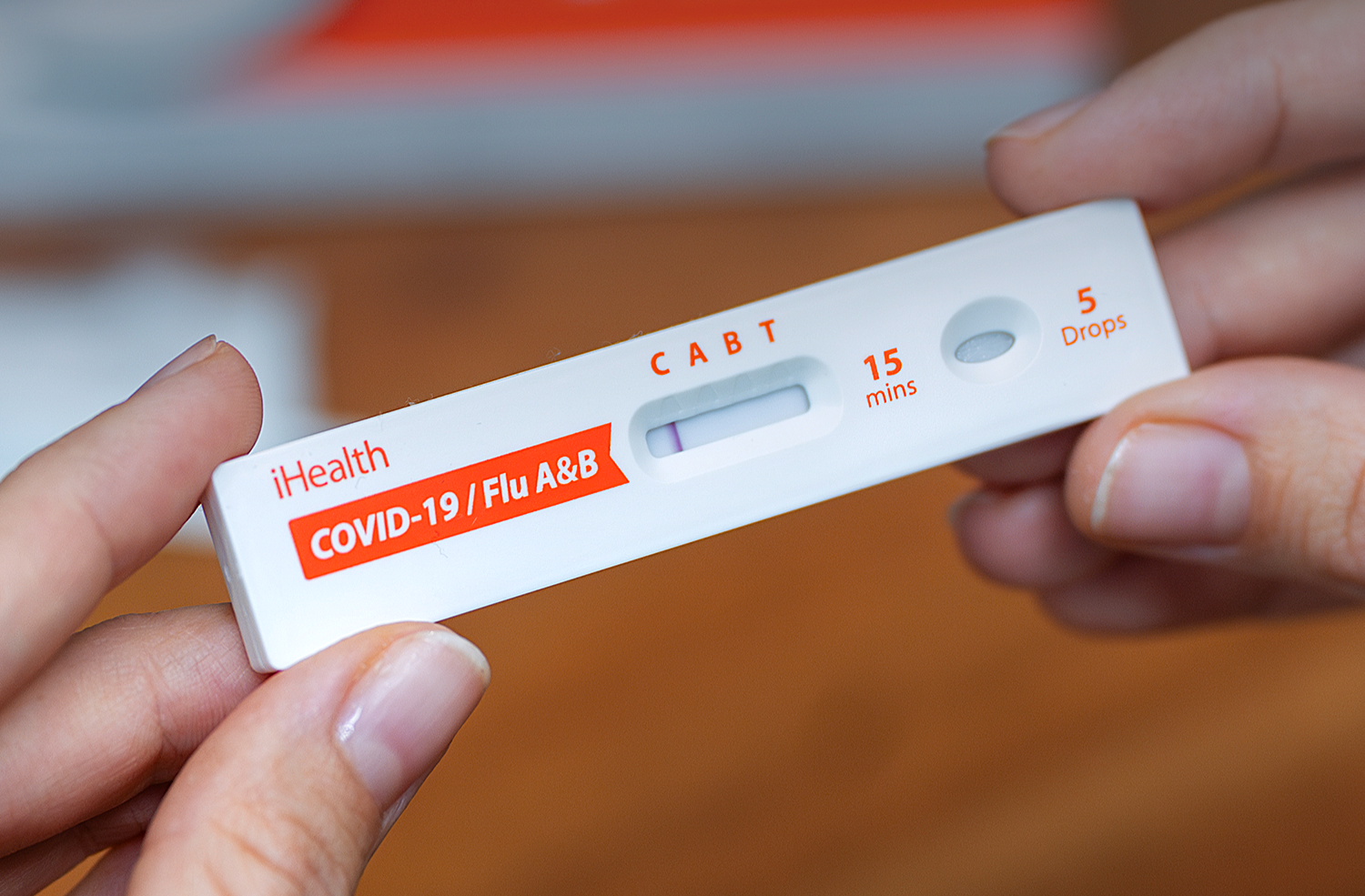Supplies Made Simple™: Talk to our Sales Team today!
Flu A, Flu B, and COVID-19: Why It’s Important to Know the Difference
Flu A, Flu B, and COVID-19: Why It’s Important to Know the Difference

With flu season here and COVID-19 still in the mix, many of us are familiar with symptoms like fever, cough, and body aches. But when these symptoms hit, how can you tell whether it’s Flu A, Flu B, or COVID-19? Each is a highly contagious respiratory illness that shares so many symptoms, which makes telling them apart very tricky.
Understanding the differences is important not only to get the right treatment, but also to avoid spreading the virus, and protect those most at risk. In this post, we’ll break down the key similarities and differences between Flu A, Flu B, and COVID-19. We’ll also explain why knowing which virus you have matters and how testing and prevention can help us all stay one step ahead.
Understanding the Differences Between Influenza A, B, and COVID-19

Key Differences and Similarities between Influenza Virus A & B
The influenza virus has two common strains, Flu A and Flu B. Both respiratory infections occur yearly, especially during the colder months. Although they may seem the same, each is a very different virus. Although they can have similar symptoms—fever, sore throat, chills, body aches, and fatigue—there are some key differences.
Flu A tends to cause more severe symptoms and is often the culprit behind flu pandemics. Flu B, while still serious, generally results in fewer widespread outbreaks and milder symptoms like the common cold.
COVID-19 & The Risks Associated with Long COVID
COVID-19, caused by the SARS-CoV-2 virus, also shares a lot of flu-like symptoms—fever, fatigue, and cough are all common. But COVID-19 can also bring on some unique symptoms like loss of taste or smell.
It can also vary in severity, with some people recovering quickly with just cold symptoms, while others experience a more severe illness or even long-term complications (aka Long COVID).
For high-risk groups, COVID-19 can be especially unpredictable and dangerous. But who are these at-risk groups you may ask? People with the following characteristics or conditions:
- Pregnant Women
- Older Adults, from ages 65 and up
- People with Any Underlying Health Conditions, like any cardiovascular diseases or diabetes
- Auto-immunocompromised people - often people with weakened immune systems
- Minorities - often caused by social variables such as employment risks, economic challenges, and restricted access to healthcare.
- Healthcare and Essential workers - certain occupations with a higher chance of close contact with COVID-19.
The bottom line? Symptoms alone aren’t enough to tell which virus you’ve caught.
That’s why testing is so important.
Why It’s Critical to Identify the Right Virus

Tailored Treatment Options
Getting the right diagnosis means getting the right treatment.
For Flu A and Flu B,
antiviral medications like Tamiflu can help if you take them early enough. With COVID-19,
treatments might involve antivirals like
Paxlovid,
monoclonal antibodies, or just supportive care, depending on how severe your case is.
Knowing what you’re dealing with helps you get the care you need faster.
Different Public Health Protocols
COVID-19 and the flu don’t follow the same playbook when it comes to public health measures. For COVID-19, isolation is usually necessary for disease control, whereas flu cases often require less strict quarantine measures.
Misidentifying the virus could lead to improper actions, potentially increasing the risk of outbreaks.
COVID and Flu Complications Can Vary
Each virus affects people differently, especially vulnerable groups like the elderly, children, and those with weakened immune systems. The flu can lead to pneumonia and other complications, but
COVID-19 has a higher chance of causing severe respiratory issues or even long-term organ damage. Getting an accurate diagnosis helps you assess these risks and manage complications early.
The Role of Testing When Flu Symptoms Appear
The only way to know for sure whether it’s Flu A, Flu B, or COVID-19 is through testing. Options like rapid antigen tests, PCR tests, and combo tests can help pinpoint which virus you’ve got. Early and accurate diagnosis not only speeds up treatment but also helps stop the spread and limits the chance of severe illness. Testing also plays a crucial role in helping healthcare providers track and manage outbreaks effectively.
Our site offers a 3-in-1 take-home testing kit that checks for COVID-19, Flu A, and Flu B—all in one simple test. Get fast, accurate results in just 15 minutes, without needing to visit a doctor. It’s safe for everyone in the family, including kids as young as 2, and perfect to keep on hand at home or work. The compact, easy-to-use kit makes it simple to know exactly what you're dealing with, so you can get the right treatment fast.
Prevention Strategies for Flu and COVID-19
The good news? There are effective ways to protect yourself from both flu and COVID-19. Vaccines for Flu A, Flu B, and COVID-19 are widely available, and they’re one of the best tools we have to reduce the risk of severe illness. Annual flu shots are designed to protect against the most common strains, while the COVID-19 vaccine and booster continue to offer strong protection against new variants.
Other simple steps, like frequent hand washing, wearing masks in crowded or high-risk areas, and practicing social distancing when needed, can also go a long way in preventing both flu and COVID-19.
We have testing kits to help you with Flu & COVID detection

As flu season kicks into gear and COVID-19 remains a concern for many, it’s more important than ever to recognize symptoms and get tested if you feel any flu symptoms. Early detection not only improves your health outcomes but also helps protect the community by preventing the spread of these viruses.
Visit our shop to get tested for Flu A, B, and COVID all in one single test. You can receive quick, precise results without going to the doctor in as little as 15 minutes. As mentioned before, everyone in the family, including small children can safely use it. Knowing exactly what you're dealing with is made easy with this small, user-friendly kit, allowing you to receive the appropriate treatment ASAP.
Stay proactive—get tested, stay up to date on the COVID and flu vaccine, and follow simple prevention measures to safeguard your health and the health of those around you.
==> Check out our 3-in-1 iHealth COVID, Flu A, and Flu B Over-The-Counter Test Now!












